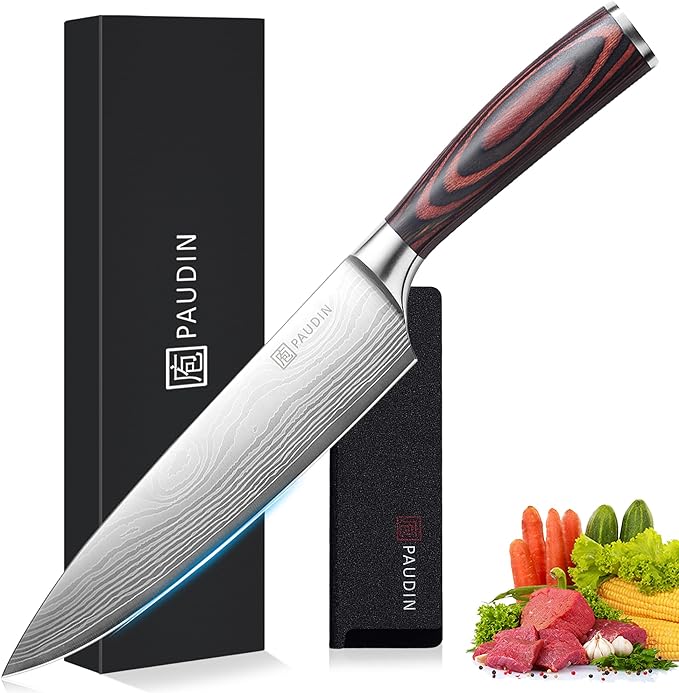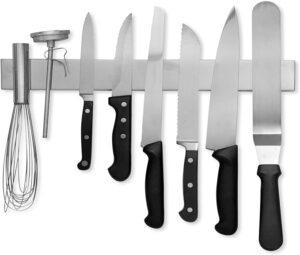To Ace Chopping Techniques: Perfect Cuts in 2024

Table of Contents
First things first, chopping techniques aren’t just about making things smaller. It’s about doing it right—efficiently, safely, and in a way that makes your food look good and cook evenly. Plus, it saves you time and hassle. Let’s break down the basic chopping techniques you need to know.
The Rock Chop
The rock chop is the bread and butter of chopping methods. It’s all about rocking the knife back and forth, keeping the tip anchored to the cutting board. This is your go-to move for chopping herbs and small veggies. It’s quick, easy, and keeps your fingers safe.
The Slice
Slicing is one of the simplest chopping methods. Just move your knife forward and down in one smooth motion to get nice, even slices. This technique is perfect for veggies like cucumbers, carrots, and zucchinis.
The Dice
Dicing is a bit more advanced but super important. It’s about cutting your veggies into uniform cubes. This ensures everything cooks evenly and looks great in your dishes. Think salsas, soups, and stews—dicing is a must.
The Julienne
Julienning might sound fancy, but it’s just cutting veggies into thin, matchstick-like pieces. It’s great for salads and stir-fries and adds a professional touch to your dishes. This is one of those chopping methods that will seriously up your game.
Taking It Up a Notch: Advanced Chopping Techniques
Once you’ve nailed the basics, it’s time to get a bit fancier with some advanced chopping techniques.
The Brunoise
Brunoise is all about precision. You’re dicing veggies into tiny, uniform cubes, usually about 1/8 inch on each side. This technique is often used for garnishes or finely textured sauces. It’s a bit more work but totally worth it for that pro look.
The Chiffonade
Chiffonade is one of those chopping techniques that sounds super sophisticated but is pretty straightforward. Stack your leaves (like basil), roll them up, and slice into thin ribbons. Perfect for adding a touch of elegance to your dishes.
Gear Up for Chopping Techniques
Your chopping techniques are only as good as the tools you use. Invest in a solid chef’s knife. It should feel comfortable in your hand, be well-balanced, and sharp enough to tackle any job. A dull knife makes chopping harder and more dangerous, so keep it sharp!
A good cutting board is also key. Go for wooden or plastic—they’re kinder to your knives. And don’t forget to put a damp cloth underneath to stop it from slipping. Stability is crucial for safe and precise chopping.
Safety First: Smart Chopping Techniques
Safety is a big deal when it comes to chopping techniques. Here are some quick tips:
Order The Best Magnetic Knife Strip For Your Kitchen
- Stabilize Your Cutting Board: No slipping allowed. Use a damp cloth or non-slip mat under your board.
- Use the Claw Grip: Tuck those fingers in and use your knuckles as a guide. This way, if the knife slips, it hits your knuckles, not your fingertips.
- Keep Your Knife Sharp: A sharp knife is a safe knife. Regularly hone it and get it professionally sharpened now and then.
- Pay Attention: Focus on what you’re doing. Distractions lead to accidents.
The Zen of Chopping Techniques
Believe it or not, there’s something zen about mastering chopping techniques. It turns a mundane task into a kind of meditative practice. The rhythm of the knife, the sound of it hitting the board, and the sight of perfectly chopped ingredients—there’s something deeply satisfying about it. Plus, it makes cooking faster and more enjoyable.
Level Up Your Chopping Techniques
Want to really master chopping techniques? Practice, practice, practice. Start with easy veggies like onions, carrots, and bell peppers. Once you’ve got those down, move on to trickier ones like tomatoes and herbs. The more you chop, the better you’ll get.
Avoiding Common Chopping Mistakes
- Using a Dull Knife: A dull knife is a dangerous knife. Keep it sharp with regular honing and professional sharpening.
- Improper Knife Grip: Don’t hold your knife too tight or too loose. Find a grip that gives you control without causing fatigue.
- Skipping the Claw Grip: Always use the claw grip to protect your fingers. Your fingertips will thank you.
More Pro Tips for Chopping Techniques
1. The Smash and Mince: Perfect for garlic. Smash it with the flat side of your knife, then mince. It’s quick and releases all that delicious garlic flavor.
2. The Bias Cut: Cutting veggies at an angle increases the surface area for more even cooking and a prettier presentation. Ideal for stir-fries and roasted veggies.
3. The Rough Chop: Sometimes you don’t need precision. A rough chop is great for dishes where the ingredients will break down during cooking, like stews or chilis.
Wrapping It Up
Mastering chopping techniques is a game-changer. It makes your cooking more efficient, your dishes more consistent, and the whole process a lot more enjoyable. From the rock chop to the chiffonade, each technique has its place in your culinary toolkit.
So next time you’re in the kitchen, think about your chopping techniques. Invest in a good knife, practice regularly, and before you know it, you’ll be chopping like a pro!
Read More:
Top 5 Professional Chef’s Knife Picks of 2024: Upgrade Your Collection
The Ultimate Guide to Choosing the Perfect Chef’s Knife: A 2024 Comprehensive Buyer’s Guide









